| Listing 1 - 10 of 13 | << page >> |
Sort by
|
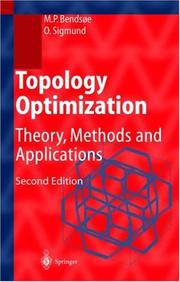
ISBN: 3540429921 9783540429920 364207698X 3662050862 Year: 2004 Publisher: Berlin Springer
Abstract | Keywords | Export | Availability | Bookmark
 Loading...
Loading...Choose an application
- Reference Manager
- EndNote
- RefWorks (Direct export to RefWorks)
The topology optimization method solves the basic engineering problem of distributing a limited amount of material in a design space. The first edition of this book has become the standard text on optimal design, which is concerned with the optimization of structural topology, shape and material. This edition has been substantially revised and updated to reflect progress made in modelling and computational procedures. It also encompasses a comprehensive and unified description of the state of the art of the so-called material distribution method, based on the use of mathematical programming and finite elements. Applications treated include not only structures but also MEMS and materials. [Back cover]
Structural optimization --- Topology --- topologie --- finite element method --- Optimisation des structures --- 515.1 --- 515.1 Topology --- Analysis situs --- Position analysis --- Rubber-sheet geometry --- Geometry --- Polyhedra --- Set theory --- Algebras, Linear --- Optimal structural design --- Optimization, Structural --- Optimization of structural systems --- Optimum design of structures --- Optimum structural design --- Optimum structures --- Structures, Optimum design of --- Structural design --- eindige elementen --- Topologie --- Structural optimization. --- Topology. --- Optimisation des structures. --- Topologie. --- Mathematical models. --- Mechanical engineering. --- Mechanics. --- Mechanics, Applied. --- Engineering design. --- Mathematical optimization. --- Mathematical Modeling and Industrial Mathematics. --- Mechanical Engineering. --- Solid Mechanics. --- Engineering Design. --- Optimization. --- Optimization (Mathematics) --- Optimization techniques --- Optimization theory --- Systems optimization --- Mathematical analysis --- Maxima and minima --- Operations research --- Simulation methods --- System analysis --- Design, Engineering --- Engineering --- Industrial design --- Strains and stresses --- Applied mechanics --- Engineering, Mechanical --- Engineering mathematics --- Classical mechanics --- Newtonian mechanics --- Physics --- Dynamics --- Quantum theory --- Machinery --- Steam engineering --- Models, Mathematical --- Design --- Calcul des charges et des tensions --- Isotropie et anisotropie --- Matlab --- Methodes multigrilles - generation de maillages --- Optimalisation morphologique --- Optimisation structurelle --- Optimisation topologique
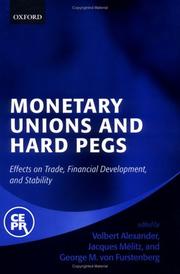
ISBN: 0199271402 Year: 2004 Publisher: Oxford Oxford University Press
Abstract | Keywords | Export | Availability | Bookmark
 Loading...
Loading...Choose an application
- Reference Manager
- EndNote
- RefWorks (Direct export to RefWorks)
Monetary unions --- 332.4566 --- 333.431 --- 333.825 --- AA / International- internationaal --- Common currencies --- Currency areas --- Currency unions --- Optimum currency areas --- Monetaire Unies --- Deviezenpolitiek. Interventies --- Money. Monetary policy --- Currency question --- Money
Book
ISBN: 1462366813 1452763143 1283274191 9786613823441 1451919891 Year: 2004 Publisher: Washington, D.C. : International Monetary Fund,
Abstract | Keywords | Export | Availability | Bookmark
 Loading...
Loading...Choose an application
- Reference Manager
- EndNote
- RefWorks (Direct export to RefWorks)
The recent experience of the European Economic and Monetary Union (EMU) has stimulated the debate over currency union and reinforced the incentive for the emergence of currency blocs in other regions of the world. This paper builds a dynamic stochastic model-based on network externalities operating through trade channels-to explain the emergence of currency blocs, and specifically, why some countries join a currency union earlier than others. The paper develops and formalizes the intuition that currency bloc formation is path dependent, and that countries join currency blocs sooner the more they trade with the bloc member countries, with each additional member serving in a dynamic way to attract more members into the bloc. Evidence from the current pattern of EMU expansion supports the model, which is later used to elaborate on the pattern of further expansion of the union.
Monetary unions --- Trade blocs --- Regional economic blocs --- Regional trading blocs --- Trading blocs --- International trade --- Common currencies --- Currency areas --- Currency unions --- Optimum currency areas --- Currency question --- Money --- Econometric models. --- European Union countries --- EU countries --- Euroland --- Europe --- Commercial policy --- Exports and Imports --- Inflation --- Money and Monetary Policy --- Financial Aspects of Economic Integration --- Monetary Systems --- Standards --- Regimes --- Government and the Monetary System --- Payment Systems --- Trade Policy --- International Trade Organizations --- Empirical Studies of Trade --- Price Level --- Deflation --- International economics --- Monetary economics --- Macroeconomics --- Currencies --- Trade agreements --- Trade balance --- Commercial treaties --- Balance of trade --- Prices --- Poland, Republic of
Book
ISBN: 1462335799 1452762341 1282106937 1451899386 9786613800282 Year: 2004 Publisher: Washington, D.C. : International Monetary Fund,
Abstract | Keywords | Export | Availability | Bookmark
 Loading...
Loading...Choose an application
- Reference Manager
- EndNote
- RefWorks (Direct export to RefWorks)
This paper provides a framework for evaluating the decision to enter a currency area, including the best timing for entry, and uses it to evaluate the assessment of the five tests for euro entry published by the U.K. Treasury in June 2003. The breadth and depth of its assessment is impressive by any standard. Nonetheless, this paper points at some areas that deserve to be explored further in future assessments. Covering these areas would not necessarily have changed the assessment's conclusion, namely that the case for entry is not yet "clear and unambiguous,." but it would have strengthened any conclusion reached. In addition, the paper highlights that in several areas relevant to the entry decision, the margin for uncertainty will remain significant, regardless of any reasonable attempt to reduce it.
Euro --- Monetary unions --- Common currencies --- Currency areas --- Currency unions --- Optimum currency areas --- Currency question --- Money --- Exports and Imports --- Infrastructure --- Macroeconomics --- Real Estate --- Industries: Financial Services --- Macroeconomics and Monetary Economics: General --- Monetary Systems --- Standards --- Regimes --- Government and the Monetary System --- Payment Systems --- Housing Supply and Markets --- Macroeconomics: Consumption --- Saving --- Wealth --- Economic Development: Urban, Rural, Regional, and Transportation Analysis --- Housing --- Financial Aspects of Economic Integration --- Banks --- Depository Institutions --- Micro Finance Institutions --- Mortgages --- Property & real estate --- International economics --- Finance --- Housing prices --- Consumption --- Prices --- National accounts --- Economic integration --- Financial institutions --- Economics --- Saving and investment --- United Kingdom
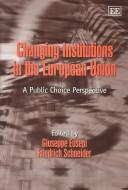
ISBN: 1843765152 Year: 2004 Publisher: Cheltenham Elgar
Abstract | Keywords | Export | Availability | Bookmark
 Loading...
Loading...Choose an application
- Reference Manager
- EndNote
- RefWorks (Direct export to RefWorks)
European law --- Monetary unions --- Economic and Monetary Union. --- European Union countries --- Economic integration. --- 334.150.7 --- 334.151.20 --- 334.151.3 --- EEC / European Union - EU -Europese Unie - Union Européenne - UE --- -337.142 --- Common currencies --- Currency areas --- Currency unions --- Optimum currency areas --- Currency question --- Money --- Europese politieke unie. --- Economische en monetaire unie van de Europese Gemeenschappen: algemeenheden. --- EG : begrotings- en belastingpolitiek. --- EMU --- WWU --- Europäische Wirtschafts- und Währungsunion --- Unión Económica y Monetaria Europea --- Oikonomikē kai Nomismatikē Henōsē --- ONE --- European Monetary Union --- Talous- ja rahaliitto --- Unione monetaria --- Euroopan talous- ja rahaliitto --- Rahaliitto --- European Economic and Monetary Union --- UME --- Unione monetaria europea --- EWWU --- Unión Monetaria Europea --- Ekonomiska och monetära unionen --- Union monétaire européenne --- Union économique et monétaire européenne --- UEM --- Unia Gospodarcza i Walutowa --- -EU countries --- Euroland --- Europe --- Economic integration --- -Economic integration --- 337.142 --- Europese politieke unie --- Economische en monetaire unie van de Europese Gemeenschappen: algemeenheden --- EG : begrotings- en belastingpolitiek
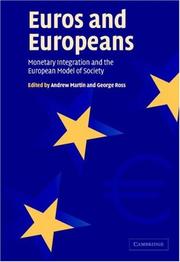
ISBN: 0521835704 0521543630 1107161290 0511230605 0511231377 0511316623 0511492022 1280702192 0511228988 0511229828 9780511231377 9780511229824 9780511230608 9780511492020 9780521835701 9781280702198 9781107161290 9780511228988 9780511316623 9780521543637 Year: 2004 Publisher: Cambridge Cambridge University Press
Abstract | Keywords | Export | Availability | Bookmark
 Loading...
Loading...Choose an application
- Reference Manager
- EndNote
- RefWorks (Direct export to RefWorks)
Economic and Monetary Union (EMU) is one of the most important developments in modern European politics. Building on two decades of monetary integration it transfers monetary policy, a core function of the modern state, to an independent European Central Bank (ECB) and limits member states' fiscal policy discretion. The ECB insists that growth and employment depend on 'flexibilizing' Europe's labor markets through deep reforms of the social policies and employment relations which comprise the 'European social model'. Member states retain authority over these areas at the heart of national politics, but how will EMU affect the domestic politics of institutional change? Will EMU reinforce de-regulation and retrenchment or will it facilitate reforms that maintain the protections against economic insecurity, inequality, and unilateral employer power the European model has provided? To address these questions, a transatlantic team of leading experts analyzes the evolving tensions between monetary integration and national social policies.
Euro --- Euro. --- Monetary unions --- Euro (Monnaie) --- Unions monétaires --- European Union countries --- Pays de l'Union européenne --- Social policy. --- Politique sociale --- #SBIB:327.7H231 --- 334.151.1 --- 334.151.20 --- 334.151.21 --- 334.151.50 --- EEC / European Union - EU -Europese Unie - Union Européenne - UE --- -332.494 --- Common currencies --- Currency areas --- Currency unions --- Optimum currency areas --- Currency question --- Money --- Europese Unie: sociaal-economisch beleid, landbouw-, milieu-, cultuur- en communicatiebeleid --- EG : economisch en monetair beleid. --- Economische en monetaire unie van de Europese Gemeenschappen: algemeenheden. --- Europese centrale bank. ESCB. Centrale banken. --- Sociaal beleid : algemeenheden. --- -EU countries --- Euroland --- Europe --- Social policy --- -Social policy --- Unions monétaires --- Pays de l'Union européenne --- 332.494 --- EG : economisch en monetair beleid --- Economische en monetaire unie van de Europese Gemeenschappen: algemeenheden --- Europese centrale bank. ESCB. Centrale banken --- Sociaal beleid : algemeenheden --- Social Sciences --- Political Science
Book
ISBN: 9289459700 Year: 2004 Volume: 205 Publisher: Brussels European commission. Directorate-general for economic and financial affairs
Abstract | Keywords | Export | Availability | Bookmark
 Loading...
Loading...Choose an application
- Reference Manager
- EndNote
- RefWorks (Direct export to RefWorks)
Euro --- Euro (Monnaie) --- Public opinion --- Opinion publique --- SE / Sweden - Zweden - Suede --- 334.151.20 --- 333.431 --- 334.151.25 --- 333.450 --- Economische en monetaire unie van de Europese Gemeenschappen: algemeenheden. --- Monetaire Unies. --- Rekeneenheid, gemeenschappelijke munt van de Europese Gemeenschappen. ECU. Euro. --- Theorie van het deviezenverkeer. Theorie van de koopkrachtpariteit. --- Working papers --- Optimum currency area --- Exchange rate regime --- Voting --- Referendum --- Sweden --- E60 --- F15 --- F33 --- H11 --- Macroeconomic Policy, Macroeconomic Aspects of Public Finance, and General Outlook: General --- Economic Integration --- International Monetary Arrangements and Institutions --- Structure, Scope, and Performance of Government --- Economische en monetaire unie van de Europese Gemeenschappen: algemeenheden --- Monetaire Unies --- Rekeneenheid, gemeenschappelijke munt van de Europese Gemeenschappen. ECU. Euro --- Theorie van het deviezenverkeer. Theorie van de koopkrachtpariteit
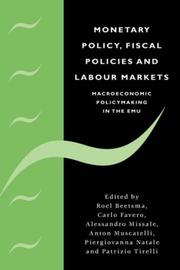
ISBN: 0521823080 052104183X 0511185510 0511184689 0511327005 0511492383 1280458275 0511187327 0511186398 1107146119 9780511184680 9780511187322 9780511186394 9780521823081 9780511185519 9786610458271 6610458278 9780511492389 9781280458279 9780521041836 Year: 2004 Publisher: Cambridge, UK New York, NY, USA Cambridge University Press
Abstract | Keywords | Export | Availability | Bookmark
 Loading...
Loading...Choose an application
- Reference Manager
- EndNote
- RefWorks (Direct export to RefWorks)
Following the birth of the European Monetary Union (EMU) economists are still divided in their assessment of the ability of its key institutions to provide macroeconomic stability and foster the reforms necessary to stimulate economic growth. In this collection, experts focus on issues of fiscal policy, monetary policy and labour markets and ask: Can the stability and growth pact provide an adequate framework for the conduct of national fiscal policies? Is the ECB reacting with competence and flexibility to a rapidly changing macroeconomic environment? How do national labour markets react to the macroeconomic institutions and what are the structural reforms needed in labour markets? Blending empirical and theoretical data, this book offers one of the most comprehensive surveys of research in macroeconomic policymaking within the EMU.
Monetary policy --- Fiscal policy --- Monetary unions --- AA / International- internationaal --- EEC / European Union - EU -Europese Unie - Union Européenne - UE --- 334.151.20 --- 334.151.21 --- 334.151.50 --- -Fiscal policy --- -Monetary unions --- -339.5094 --- Common currencies --- Currency areas --- Currency unions --- Optimum currency areas --- Currency question --- Money --- Tax policy --- Taxation --- Economic policy --- Finance, Public --- Monetary management --- Currency boards --- Money supply --- Economische en monetaire unie van de Europese Gemeenschappen: algemeenheden. --- Europese centrale bank. ESCB. Centrale banken. --- Sociaal beleid : algemeenheden. --- Government policy --- Business, Economy and Management --- Economics --- 339.5094 --- Economische en monetaire unie van de Europese Gemeenschappen: algemeenheden --- Europese centrale bank. ESCB. Centrale banken --- Sociaal beleid : algemeenheden --- Monetary policy - European Union countries --- Fiscal policy - European Union countries --- Monetary unions - European Union countries --- Politique monétaire --- Politique fiscale --- Unions monétaires
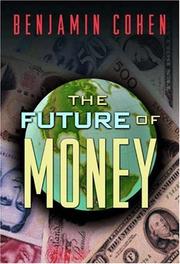
ISBN: 0691116652 9780691116655 Year: 2004 Publisher: Princeton Princeton university press
Abstract | Keywords | Export | Availability | Bookmark
 Loading...
Loading...Choose an application
- Reference Manager
- EndNote
- RefWorks (Direct export to RefWorks)
International finance --- Monetary policy --- Monetary unions --- Money --- 336.74 --- AA / International- internationaal --- 333.401 --- 341.246 --- 333.430 --- 333.403 --- 333.420.0 --- 333.840 --- 332.042 --- Fc2.i --- Currency --- Monetary question --- Money, Primitive --- Specie --- Standard of value --- Exchange --- Finance --- Value --- Banks and banking --- Coinage --- Currency question --- Gold --- Silver --- Silver question --- Wealth --- Common currencies --- Currency areas --- Currency unions --- Optimum currency areas --- Monetary management --- Economic policy --- Currency boards --- Money supply --- International monetary system --- International money --- International economic relations --- 336.74 Geld. Geldwezen. Monetaire sector. --- Geld. Geldwezen. Monetaire sector. --- Geld. Geldwezen. Monetaire sector --- Begrip en functies van het geld --- Internationale monetaire akkoorden --- Internationale monetaire unies, conventies en akkoorden: algemeen --- Monetaire theorieën. Kwantitatieve theorie. Theorie van de incasso's. Optiek van de uitgaven en inkomens --- Theorieën in verband met de keuze van de geldstandaard. Currency substitution. Foreign currency deposits --- Verband tussen de économische groei en de geld-, bank-en kredietpolitiek: algemeenheden. Monetaire overwaardering en onderwaardering
Book
ISBN: 1462342590 1452796440 1283511770 9786613824226 1451920075 Year: 2004 Publisher: Washington, D.C. : International Monetary Fund,
Abstract | Keywords | Export | Availability | Bookmark
 Loading...
Loading...Choose an application
- Reference Manager
- EndNote
- RefWorks (Direct export to RefWorks)
This paper discusses costs, benefits, and implementation challenges of a possible currency union between Belarus and Russia. It shows that Belarus and Russia are economically closely linked but nevertheless do not fulfill all "optimal currency area" criteria, especially the macroeconomic symmetry condition. Furthermore, we argue that the different speeds of economic liberalization over the past decade have resulted in different economic structures, with Belarus still dependent on monetary financing of budgets and industries. However, a final cost-benefit analysis also needs to consider that currency unification may bring substantial benefits from reduced transaction costs, an improved macroeconomic environment in Belarus, and by acting as a catalyst to advance structural reforms in Belarus.
Currency question --- Monetary unions --- Common currencies --- Currency areas --- Currency unions --- Optimum currency areas --- Money --- Fiat money --- Free coinage --- Monetary question --- Scrip --- Currency crises --- Finance --- Finance, Public --- Legal tender --- Banks and Banking --- Exports and Imports --- Financial Risk Management --- Money and Monetary Policy --- Public Finance --- Monetary Systems --- Standards --- Regimes --- Government and the Monetary System --- Payment Systems --- Foreign Exchange --- International Monetary Arrangements and Institutions --- Financial Aspects of Economic Integration --- Banks --- Depository Institutions --- Micro Finance Institutions --- Mortgages --- Financing Policy --- Financial Risk and Risk Management --- Capital and Ownership Structure --- Value of Firms --- Goodwill --- Financial Institutions and Services: Government Policy and Regulation --- Debt --- Debt Management --- Sovereign Debt --- International economics --- Banking --- Monetary economics --- Financial services law & regulation --- Economic & financial crises & disasters --- Public finance & taxation --- Currencies --- Exchange rate risk --- Lender of last resort --- Economic integration --- Financial regulation and supervision --- Financial crises --- Government debt management --- Public financial management (PFM) --- Banks and banking --- Financial risk management --- Banks and banking, Central --- Debts, Public --- Belarus, Republic of
| Listing 1 - 10 of 13 | << page >> |
Sort by
|

 Search
Search Feedback
Feedback About UniCat
About UniCat  Help
Help News
News